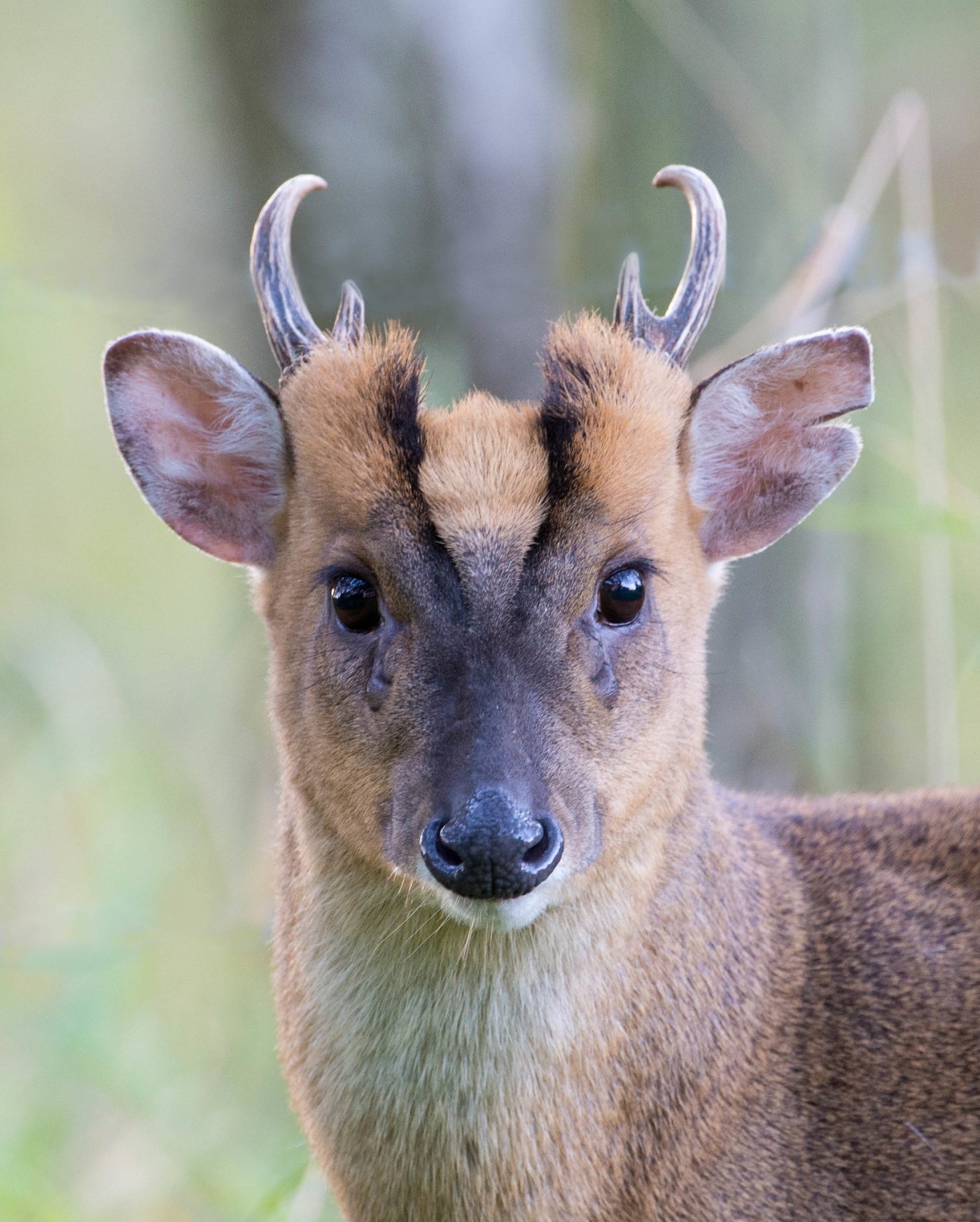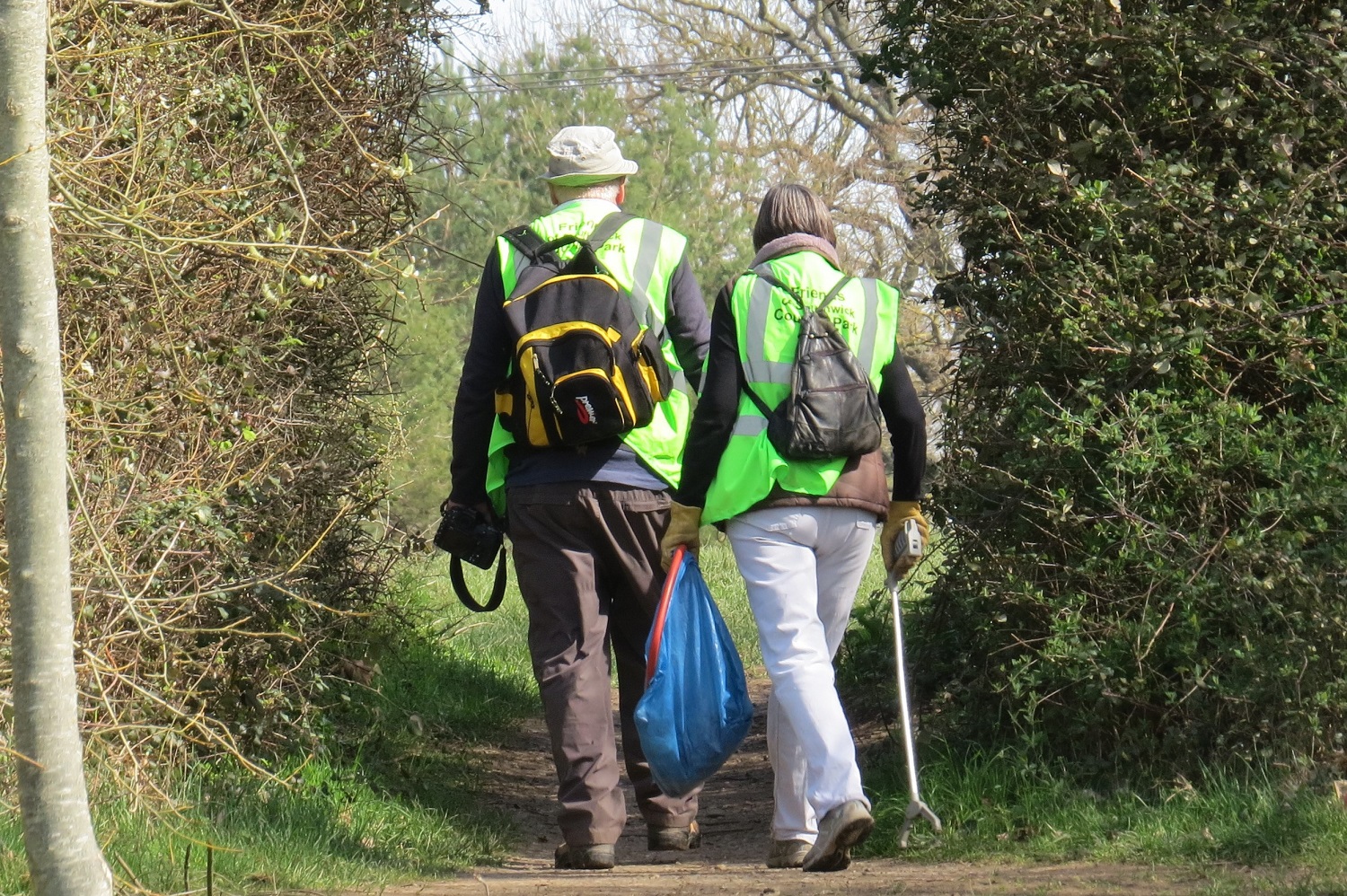A message this week from Julie Newblé:
I didn’t get pictures but I spotted a muntjac this morning at Fiveways, by the picnic area. It went across the crossroads, from Brunts to the small triangular field with the oak tree swing.
Muntjac have been sighted in the park on several occasions. Officially they are called Reeves’s muntjac and they were introduced from China into Britain at Woburn Abbey in 1894. Escapes and releases saw the species established in the wild by the 1930s and its population is now estimated at 40,000 individuals.
Muntjac are small, no taller or heavier than a healthy springer spaniel; a creature of woods and dense undergrowth, shy and rarely seen despite their burgeoning numbers.


Left: male muntjac; right: female and fawn
It is thought that muntjac may soon become the most numerous species of deer in England. They have crossed the border into Scotland and there have been reports of sightings from both Northern Ireland and the Republic of Ireland.
A male muntjac has short, unbranched antlers that slope backwards, and a pair of long tusk-like canine teeth. Its large rump appears higher than its shoulders, and its stance is typically with lowered head; it looks hunched and unfamiliar to people reared on Bambi and more used to roe deer.
Muntjac are highly territorial and both males and females can be aggressive, charging at dogs and sometimes even people, when they are disturbed, and particularly when there is a fawn to protect.
If you see muntjac in the park, please tell us.
Header image: muntjac by Don Sutherland (CC BY-NC-ND 2.0)
More about the deer that visit the park:






Midway Manor had a large herd of muntjac years ago and occasionally they would escape , so they may if contributed to our local numbers in the wild now
I am amazed that there are so many in the country. I think I have only ever seen one.